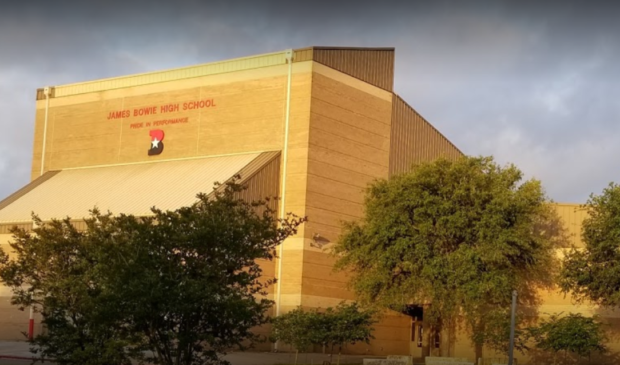Bowie High School development plan nullified by new survey
Monday, March 11, 2019 by
Jessi Devenyns Technological advancements are generally welcomed with open arms thanks to their potential to save time, money and recalculations. Unfortunately, applying these new capabilities to work done almost three decades ago can reveal errors that throw carefully negotiated plans out the door.
In 2017, City Council approved a plan that would swap impervious cover from three school sites in the Barton Springs Zone over to Bowie High School so that the school could be expanded and still keep impervious cover at or below 25 percent, per the Save Our Springs Ordinance, a water quality initiative that was adopted by the city in 1992.
Two years later, Atha Philips, the environmental program coordinator with the Watershed Protection Department came to the March 6 meeting of the Environmental Commission to explain that “that agreement would have worked but there were unforeseen circumstances.”
According to Philips, “A new survey revealed that there were 4 acres of additional impervious cover not accounted for in the original survey.” This survey came to the attention of the Watershed Protection Department last fall. This substantial addition of acreage that is blanketed by impervious cover throws the 2017 calculations out of whack and results in Bowie having a green space deficit of 11.37 acres, Philips told the Austin Monitor.
The mysterious appearance of 4 acres can be attributed in part to the antiquated survey methodologies of the mid-1980s. Back before computers were affordable and ubiquitous, surveys and calculations were done by hand, which Philips noted could possibly account for the lack of precision in the sealed survey that was used to form the 1994 and the 2017 impervious cover agreements with the district.
In order to get back in the city’s good graces, Philips said, “They have some accounting to do to get into compliance.”
To make up for the deficit, AISD got creative in a partnership with real estate law firm the Drenner Group and the Watershed Protection Department. In 2017, the district had agreed to purchase two tracts of land close to the school, which is at 4103 W. Slaughter Lane, as well as dedicate a 5-acre site in the Travis Country subdivision for conservation purposes. To account for the newly discovered 4 acres, AISD negotiated with Mills Elementary and Bailey Middle School, which are both nearby, to use some of their developable entitlements to mitigate the impervious cover at the high school. When the additional pervious cover from these sites is added to the equation, the impervious cover at Bowie High School calculates to exactly 25 percent.
“It looks sweet on paper … but at the same time, when the population is exploding, we’re taking significant land away from those schools,” said Chair Linda Guerrero. While neither of these schools is on the list to be redeveloped for overcrowding, continued population growth will necessitate further development. However, Philips acknowledged that a prioritization needs to occur. As part of the 2017 agreement, the district agreed not to develop another high school in Southwest Austin, which makes the expansion of Bowie High School critical. “There’s a reality to developing in Austin, and it’s hard,” Philips observed.
In conjunction with coming into compliance with the SOS Ordinance, Bowie High School is undergoing master planning by the district. The Drenner Group’s Dave Anderson noted that everything hinges on reducing impervious cover on the site. “We’re trying to be as conscientious about where that (removal) is as possible,” he said. One of the more creative solutions in the plan is to remove some of the surface parking and replace it with a parking garage that will have a tennis court on top.
To get past the calculation snafu and continue to pursue the promising plans for future development on the site, the Environmental Commission voted unanimously to recommend the solution to Council. Commissioner Wendy Gordon was absent.
This story has been changed since publication to correct a typo. Photo courtesy of Google Maps.
The Austin Monitor’s work is made possible by donations from the community. Though our reporting covers donors from time to time, we are careful to keep business and editorial efforts separate while maintaining transparency. A complete list of donors is available here, and our code of ethics is explained here.
You're a community leader
And we’re honored you look to us for serious, in-depth news. You know a strong community needs local and dedicated watchdog reporting. We’re here for you and that won’t change. Now will you take the powerful next step and support our nonprofit news organization?



